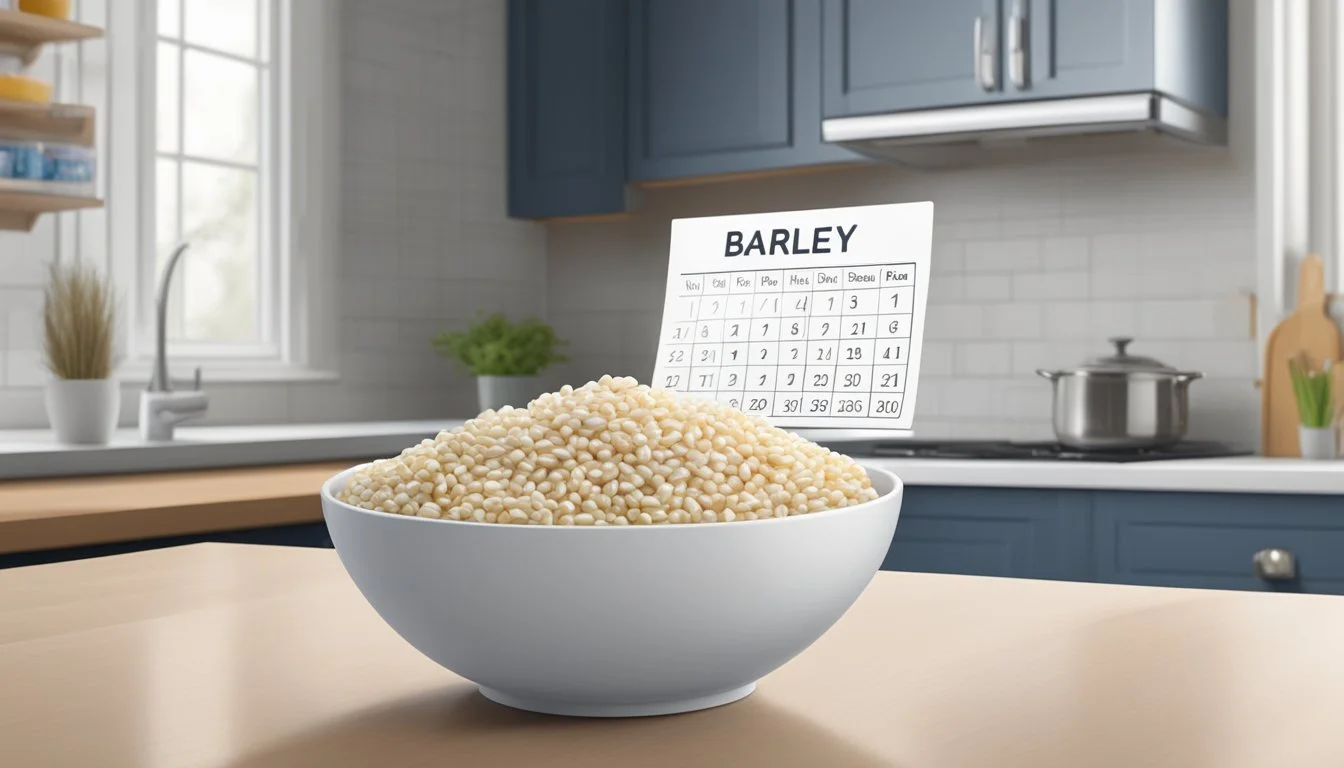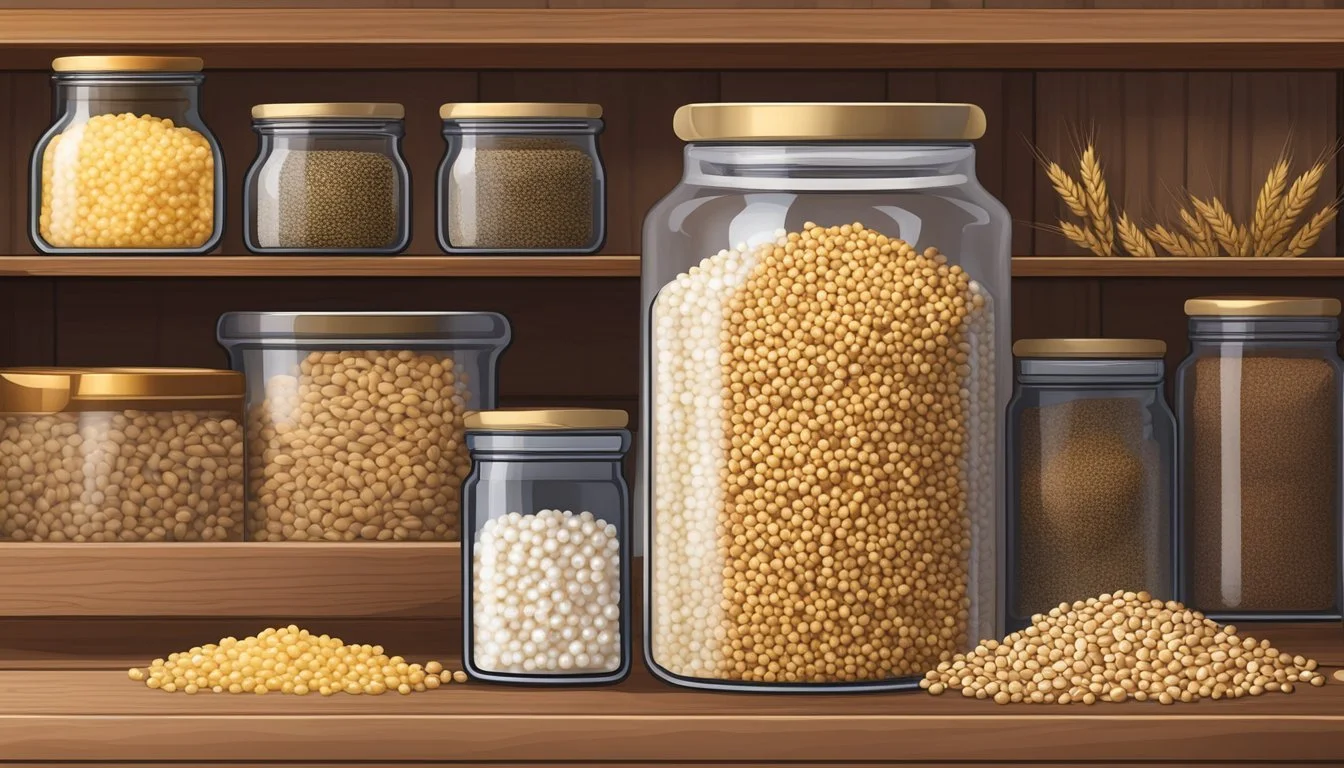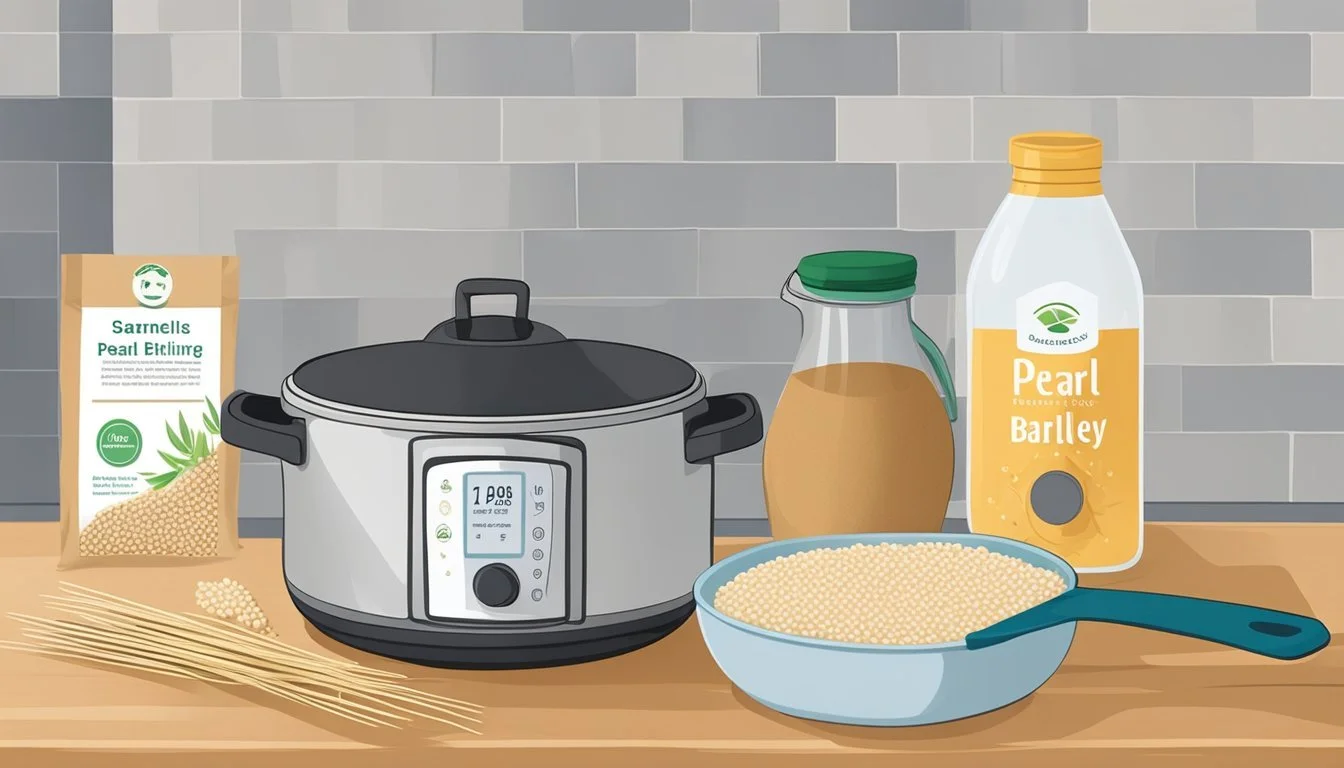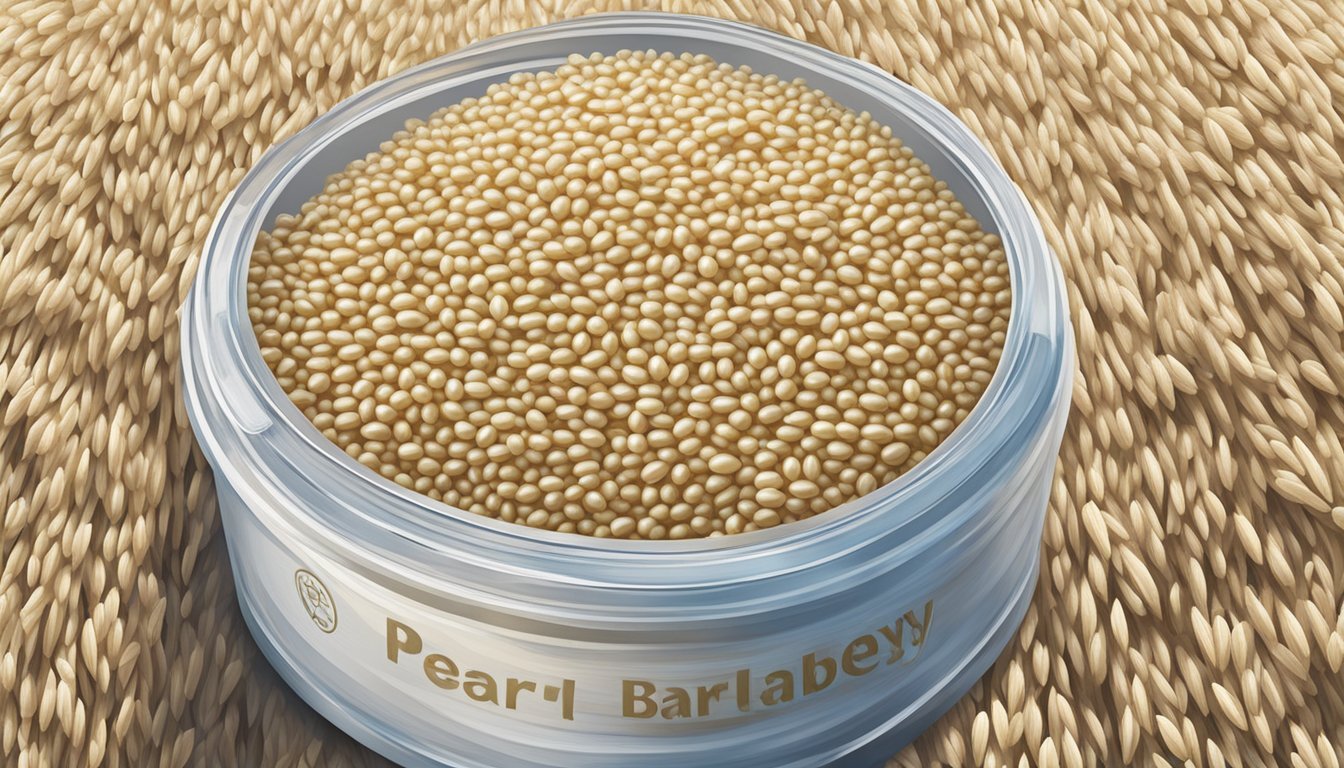How Long Does Pearl Barley Last?
Shelf Life and Storage Tips
Pearl barley (how long does pearl barley last?) is a versatile grain well-regarded for its chewy texture and nutty flavor, making it a staple in a variety of dishes ranging from soups to salads. This processed grain, with its outer husk and bran layers removed, leaves behind a pearl-like appearance, hence the name. The removal of these layers during processing enhances the grain’s cooking time and shelf life compared to whole barley.
The shelf life of pearl barley is considerable, allowing it to be stored for an extended period before use. When stored properly in an airtight container and placed in a cool, dry area, pearl barley maintains its quality, generally lasting anywhere from 1 to 2 years. The key to maximizing its longevity lies in the storage conditions, as exposure to excess moisture or heat can compromise the grain’s lifespan and quality.
Understanding the storage and handling of pearl barley can ensure that this nutritious grain can be enjoyed at its best. While it is a durable pantry item, the grain's shelf life is finite and is best consumed within the recommended time frame to preserve its optimal taste and texture.
What Is Pearl Barley?
Pearl barley is a form of barley that has undergone a refining process to remove some or all of the outer bran layer. This process is known as "pearling," hence the name pearl barley. Unlike hulled barley (how long does hulled barley last?), which retains its bran and is considered a whole grain, pearl barley has been polished, reducing its fiber content but still maintaining a significant amount of nutrition including vitamins and minerals.
Pearled barley is appreciated for its shorter cooking time compared to hulled barley. Typically, pearl barley cooks within 30 to 45 minutes, and no pre-soaking is required, making it a convenient ingredient for various dishes. Its nutritious profile includes essential nutrients; although it's not as rich in fiber due to the removal of the bran, it still provides a good source of nutrition.
The endosperm of barley remains intact in pearl barley, which is the part that contains most of the grain's starchy carbohydrate content. Pearl barley's texture is softer and less chewy than that of hulled barley, and it has a mild, nutty flavor.
Consumers choose pearl barley for its versatility in the kitchen, serving as a valuable component in soups, stews, salads, and pilafs. It is seen as a nutritious alternative to more refined grains and can contribute to a varied and balanced diet.
Proper Storage Conditions
Proper storage conditions are paramount to maintain the shelf life and quality of pearl barley. Ensuring the storage environment is suitable for either uncooked or cooked barley is key to its longevity.
Storing Uncooked Pearl Barley
Uncooked pearl barley's shelf life can be maximized by storing it in an airtight container in a cool and dry location, such as a pantry or a cupboard, away from direct sunlight. The ideal temperature is at or below room temperature. By maintaining proper storage conditions, one can expect uncooked barley to retain its quality for 1 to 2 years.
Storage Tips for Uncooked Pearl Barley:
Use an airtight container to protect barley from moisture and pests.
Store in a pantry or cupboard at a stable temperature.
Keep away from strong odors and heat sources to prevent flavor absorption or spoilage.
Refrigerating Cooked Barley
Once pearl barley is cooked, its longevity decreases but proper storage can maximize its shelf life. Place the cooked barley in a sealed container within the refrigerator to keep it fresh. It will remain suitable for consumption for up to 3 to 5 days when refrigerated at a temperature of 40°F or below.
Refrigeration Guidelines:
Cool cooked barley to room temperature before refrigerating to prevent moisture build-up.
Place in a sealed container or resealable bag to avoid contamination.
Label the container with the date of storage to track its freshness.
Freezing Barley for Extended Shelf Life
For longer-term storage, freezing pearl barley is an effective method. Both uncooked and cooked barley can be frozen, extending their shelf life significantly.
Freezing Instructions:
Uncooked Barley: Package it in freezer-safe bags or containers, removing as much air as possible before sealing it.
Cooked Barley: Spread cooked grains on a baking sheet to freeze individually before transferring to airtight containers or bags. This prevents clumping and allows for easier use in portions.
Frozen barley can be maintained for up to 12 months in the freezer, though its best quality is used within the first few months. Always make sure it is stored at 0°F or lower to ensure its safety and quality.
Shelf Life of Pearl Barley
The shelf life of pearl barley varies significantly depending on whether it is kept uncooked or has been cooked. Factors like temperature, humidity, and whether the package is opened contribute to its longevity.
Uncooked Barley Shelf Life
Temperature: Uncooked pearl barley maintains its quality best when stored in cool, dry conditions. At a stable temperature of 32 degrees Fahrenheit, it can last for approximately two years. When stored at 50 degrees Fahrenheit, the expected shelf life is around six months.
Humidity: Dry environments are ideal for storage; exposure to humidity can lead to a shorter shelf life due to increased risk of spoilage.
Packaging: An unopened package of pearl barley, if kept in proper conditions, can remain suitable for consumption for up to three years. Once opened, the grains should ideally be used within 12 to 18 months to ensure freshness.
Best Practices for Uncooked Pearl Barley Storage:
Store in airtight containers.
Keep in a cool, dry place away from direct sunlight.
Check for an expiration or best before date to gauge initial freshness.
Cooked Barley Shelf Life
Refrigeration: Once pearl barley is cooked, refrigeration is necessary. The shelf life of cooked pearl barley in the refrigerator is typically 3-5 days.
Freezing: If freezing, cooked barley's shelf life extends significantly. In the freezer, it can maintain its quality for approximately one month.
Tips for Extending Cooked Pearl Barley Shelf Life:
Cool cooked pearl barley to room temperature before refrigerating.
Store in covered airtight containers or freezer bags.
Label containers with the cooking date for reference.
For best texture and flavor, consume within the recommended time frame.
Signs of Spoilage
Detecting signs of spoilage in pearl barley is straightforward if one knows what to look for. Spoilage typically results from improper storage that allows the growth of mold or bacteria, leading to the deterioration of the grain.
Firstly, visual inspection should reveal any obvious signs of mold growth. If one notices any form of discoloration or mold spots on their pearl barley, it is a clear sign that the grain is no longer safe for consumption and should be discarded immediately.
Odor is another critical indicator. Pearl barley should have a subtle, nutty scent. Any rancid or off smell is a tell-tale sign that the barley has turned bad. A sour or "off" smell suggests that the product may be contaminated with harmful bacteria and should not be used.
Lastly, check for the presence of insects within the packaging. Their presence indicates that the barley has been compromised and is not safe to consume.
When any of these signs are visible or detectable:
Discard the grain immediately to prevent the risk of foodborne illness.
Do not taste the barley as even a small amount of contaminated food can be harmful.
Regularly check your storage for any signs of spoilage to ensure all grains are safe for use.
How to Cook and Use Pearl Barley
Pearl barley is a versatile grain known for its palatable texture and ability to absorb flavors well. It's commonly used in a variety of dishes, ranging from salads to soups, and can be both a delicious and nutritious addition to meals.
Preparation Before Cooking
Before cooking, pearl barley should be thoroughly rinsed under cold water to remove any excess starch or debris. While optional, soaking pearl barley overnight can speed up the cooking process. To soak, simply place the barley in a bowl with enough water to cover it and let it sit at room temperature.
Cooking Techniques
Pearl barley can be cooked using various methods:
Stovetop: Combine one part barley with three parts water or broth and bring to a boil. Reduce heat, cover, and simmer for 25-30 minutes or until tender.
Oven: Preheat the oven to 375°F (190°C), combine barley and liquid in a baking dish, cover, and cook for 1 hour or until the grains are tender.
Instant Pot: Use a liquid to barley ratio of 2.5:1, and cook on high pressure for 20-25 minutes followed by a natural release.
The grains should be tender yet chewy when done.
Pearl Barley in Recipes
Pearl barley is a highly adaptable ingredient:
Salads: Cooked barley adds a chewy texture to salads and can be combined with both warm and cold ingredients.
Soups and Stews: It acts as a thickener when added to soups and stews and contributes to a hearty taste.
Side Dishes: Flavorful and nutritious side dishes can be prepared with cooked barley, mixed with vegetables, herbs, or seasoning.
Cereal: It can also be used as a cereal for breakfast, sweetened with fruit or honey.
By incorporating pearl barley into these recipes, one can enjoy its rich, nutty flavor and beneficial nutritional profile.
Tips for Maintaining Quality
When storing pearl barley, maintaining its quality is crucial for its longevity and for ensuring it contributes its characteristic nutty flavor and chewy texture to dishes. Here are some guidelines:
Proper Storage: Store pearl barley in an airtight container to protect it from contaminants and moisture.
Location: Keep the barley in a cool, dry place away from direct sunlight and heat. Avoid warm areas as they can promote moisture and spoilage.
Cleanliness: Before placing the barley in storage, ensure the container is free from extra starch, dirt, or debris that could affect the grain's quality.
Inspection: Periodically check for signs of spoilage or pests, which can quickly compromise the quality of the barley.
By following these practices, one can help ensure that the pearl barley retains its desirable qualities for as long as possible.
Do Don't Keep in a cool location Store in warm areas Use airtight containers Expose to moisture and contaminants Check for pests and spoilage Neglect regular inspections
Maintaining the quality of pearl barley is straightforward with these steps, assuring that it remains a staple ingredient ready for culinary use.
Health and Nutrition
Pearl barley, a refined version of barley where the outer hull and bran layers are removed, provides a handful of nutritional benefits. It is lower in fiber compared to its unprocessed counterpart, hulled barley, but it still contributes a significant amount to a balanced diet.
A single serving of pearl barley typically contains:
Energy: Pearl barley provides a good source of energy due to its carbohydrate content.
Fiber: Around 6 grams of fiber are present in a one-cup serving, aiding digestion and promoting satiety.
Nutrients: It is enriched with essential nutrients, particularly magnesium, selenium, and manganese.
Nutritional content per one-cup serving of cooked pearl barley:
Nutrient Amount Carbohydrates 44.3g Fiber 6g Sugars 0.4g Magnesium Variable* Selenium Variable* Manganese Variable*
*The exact amounts of magnesium, selenium, and manganese can vary. They play vital roles in bodily functions such as enzyme production, immune response, and bone health.
Although not a whole grain, pearl barley is a versatile cereal grain that assimilates well into various dishes such as soups, stews, and salads. Its nutty flavor and chewy texture make it a nutritious and satisfying addition to meals. Despite the removal of certain outer layers during processing, it retains a substantial nutritional profile that can contribute beneficially to one's diet.
Alternative Uses for Barley
Barley is a versatile grain with numerous uses beyond traditional soups and stews. When hulled barley is milled into barley flour (how long does barley flour last?), it can serve as an alternative to wheat flour in many recipes, although it is not gluten-free.
In Baking: Bakers can incorporate barley flour into bread recipes for a nutty flavor and additional fiber. It can also be used in the production of biscuits and crackers, often mixed with other flours due to its low gluten cont Vegetarian Dishes (What wine goes well with vegetarian dishes?): Barley makes an excellent base for vegetarian meals. It can be used as a filling component for veggie burgers, as a robust addition to salads, or even as a hearty substitute for rice in risottos.ent.
Gluten-Free Alternatives: For those requiring gluten-free options, barley is not suitable. However, barley-like grains such as quinoa or wild rice (how long does wild rice last?) can offer similar textures and flavors for pilafs and salads without the gluten.
Pasta Production: While traditional pasta is not made from barley, some specialized pasta might include barley flour for added texture and health benefits.
Rice Replacement: Barley can also replace rice in many dishes. It provides a different mouthfeel, with a more chewy texture and a fuller flavor that can enhance meals such as stir-fries or as a side dish.
For those exploring barley's place in their kitchen, here is a breakdown to summarize its alternative uses:
Use Case Description Baking Mixed with other flours for bread, biscuits, and more. Notable for its nutty flavor. Vegetarian Meals Acts as a nutritious and hearty base in burgers, salads, and as a substitute for rice. Pasta Production Included in specialized pasta for added benefits, despite not being a common pasta ingredient. Rice Replacement Offers a chewy texture and robust flavor, serving as a substantial alternative to rice.
Barley's adaptability in the kitchen allows for a broad range of culinary creativity, even within dietary restrictions and preferences.
FAQs on Barley Storage and Usage
How should one store uncooked pearl barley? Uncooked pearl barley should be kept in a cool, dry place, away from sunlight. For the best results, it should be stored in an airtight container to protect it from moisture and pests.
Can barley be refrigerated? Yes, storing barley in the refrigerator can extend its freshness. It typically lasts 6 to 12 months under refrigeration.
What is the cooking time for pearl barley? Pearl barley usually takes about 25 to 30 minutes to cook. However, this time can vary depending on the desired texture and the dish being prepared.
Does soaking barley affect cooking time? Soaking barley can shorten the cooking time. Barley soaked overnight will cook faster than unsoaked barley.
How does one identify if barley has gone bad? A sour smell, a change in color, or the presence of mold can all indicate that barley has spoiled.
Is the shelf life of polished barley different? Polished (pearled) barley has a slightly shorter shelf life than whole grain barley due to the removal of some of the outer layers, which lowers its natural protection.
What is the proper storage method for cooked barley? Cooked barley should be cooled and stored in a sealed container in the refrigerator and used within 3-5 days. Alternatively, it can be frozen for up to six months.
Remember, proper storage is crucial to maintain the quality and extend the shelf life of pearl barley.
Conclusion
Pearl barley boasts a reputation for being a robust and versatile grain that can be preserved for considerable periods when stored correctly. An unopened package of pearl barley can remain in good quality for up to two years when stored in a cool, dry environment. Once the packaging is breached, however, the grain's longevity depends largely on the storage conditions.
To ensure the longevity of pearl barley, individuals should consider the following storage recommendations:
Temperature: A stable temperature of 32°F can extend the grain's life, while storage at higher temperatures, such as 50°F, reduces its shelf life to about six months.
Humidity: High humidity levels can compromise the quality of pearl barley. Dry conditions are preferable to maintain its integrity over time.
Airtight Containers: Using well-sealed containers can protect pearl barley from environmental factors and preserve its flavor and texture.
When it comes to cooking the grain, pearl barley is well-regarded for its nutritional value, as it is a good source of fiber. It simplifies meal preparation, requiring no pre-soaking and a cooking time between 30 to 45 minutes with a liquid-to-grain ratio of 2:1.
Embracing appropriate storage measures ensures that the health benefits of pearl barley are retained, making it a reliable ingredient for soups, stews, and other dishes. By following these guidelines, consumers can maximize both the shelf life and the culinary potential of this nourishing grain.












